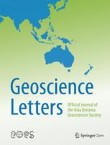Geoscience Letters welcomes submissions to the new thematic series "Coupling of the Magnetosphere–Ionosphere System".
This special collection will provide articles related to recent advances in the coupling dynamics between magnetosphere and ionosphere.
The coupling between Earth’s magnetosphere and ionosphere is essential to the transfer of energy and particle acceleration in the Solar-Terrestrial system. The dynamic coupling is usually accompanied by the generation of intense field-aligned currents and acceleration of electrons and ions and is typically characterized by magnetic perturbations observed by ground magnetometers, or magnetic and plasma observations from low-altitude spacecraft and magnetospheric observations. These dynamic processes exist at nearly all spatial and temporal scales, from the near-global substorm current wedge and westward travelling surge observed during the substorm expansion phase, to the ion-gyro-radius scale and pulsating aurora observed during the substorm recovery phase, and have been identified. Neither particle acceleration processes nor the generation of field-aligned currents that couple the magnetosphere to the ionosphere and vice versa are well understood.
The past two decades have seen the development and launch of a number of space missions and deployment of ground stations dedicated to the investigation of a particular link in the chain of interactions between magnetosphere and ionosphere. With these new assets it is now possible to understand the energy conversion process between magnetosphere and ionosphere on both global and localized scales with conjugate measurements in all key regions, i.e., the mid-magnetotail, near-Earth magnetotail, polar region, ionosphere and Earth’s ground. Major breakthroughs have recently been made with these conjugate measurements, such as THEMIS, Cluster, AMPERE, MMS and Van Allen Probes.
This special collection will include a number of papers to be presented in the session ST06 (Magnetosphere-Ionosphere Coupling Dynamics) in the AOGS annual meeting to be held in Beijing between 31 July and 5 August 2016. Papers from outside the meeting are also welcome This collection of papers will be focused on one of the fundamental and pivotal physical process in near-Earth space science, i.e., the coupling dynamics between magnetosphere and ionosphere.
Potential topics include, but are not limited to:
- Magnetosphere–ionosphere interactions
- Near-global substorm current wedge
- Near-Earth magnetotail
- THEMIS
- Cluster
- AMPERE
- MMS
- Van Allen probes
- Near-Earth space science
Submission instructions
Before submitting your manuscript, please ensure you have carefully read the Instructions for Authors for Geoscience Letters. The complete manuscript should be submitted through the Geoscience Letters submission system. To ensure that you submit to the correct thematic series please select the appropriate section in the drop-down menu upon submission. In addition, indicate within your cover letter that you wish your manuscript to be considered as part of the thematic series on History and development of solar terrestrial sciences including auroral substorms. All submissions will undergo rigorous peer review and accepted articles will be published within the journal as a collection.
Length of articles: 3000–5000 words for Research Letters and ~10,000 words for Reviews including figures which are counted 200 to 500 words depending on size.
Deadline for submissions: 31th January 2017
Guest Editors
Zhonghua Yao, Kyle Murphy, Jonathan Rae, Balan Nanan
Submissions will also benefit from the usual advantages of open access publication:
- Rapid publication: Online submission, electronic peer review and production make the process of publishing your article simple and efficient
- High visibility and international readership in your field: Open access publication ensures high visibility and maximum exposure for your work - anyone with online access can read your article
- No space constraints: Publishing online means unlimited space for figures, extensive data and video footage
- Authors retain copyright, licensing the article under a Creative Commons license: articles can be freely redistributed and reused as long as the article is correctly attributed
For editorial enquiries please contact editorial@geoscienceletters.com.
Sign up for article alerts to keep updated on articles published in Geoscience Letters - including articles published in this thematic series!
